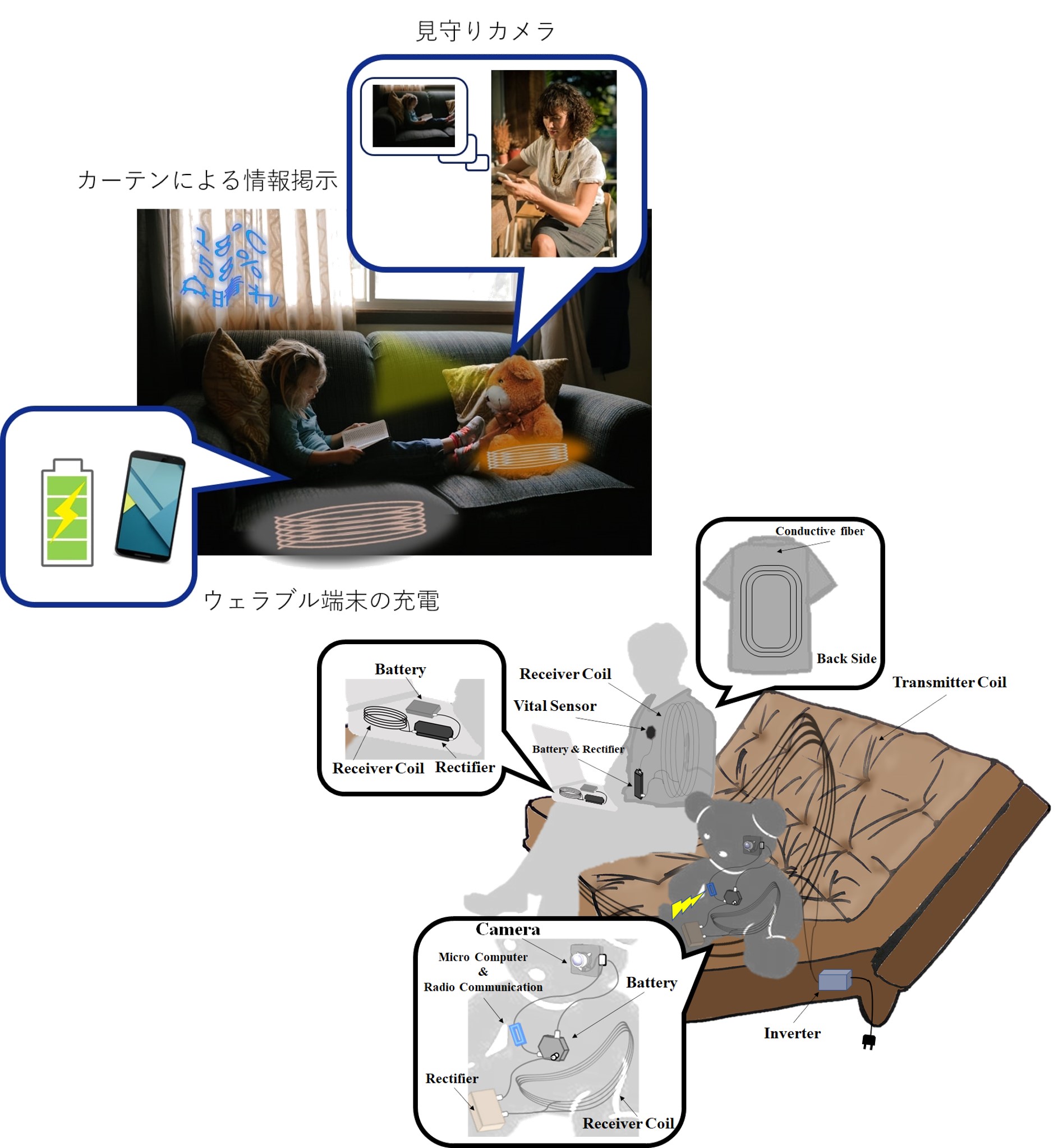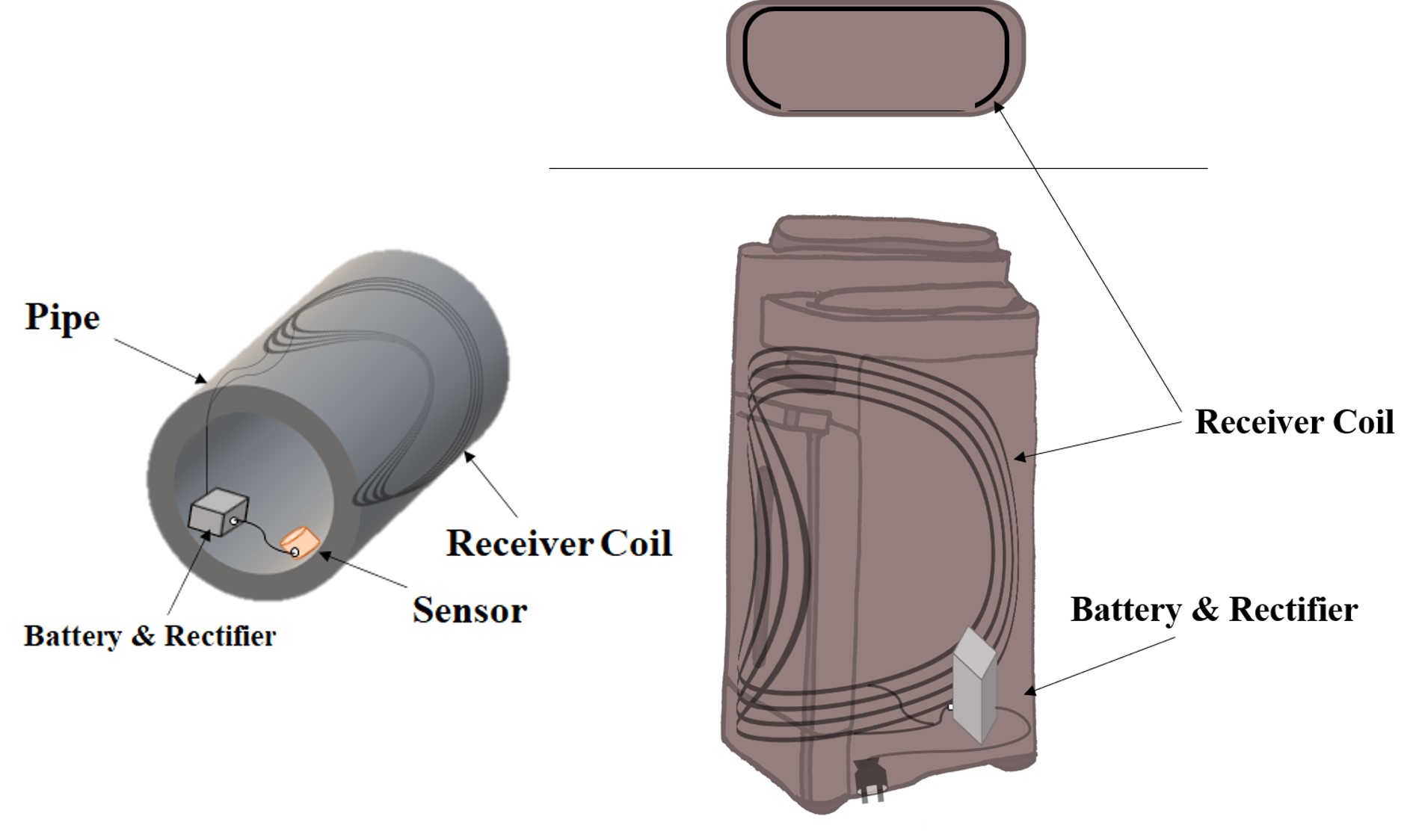TOP

Wireless power transfer by flexible coil with automatic resonance compensation

With the increase in the number of mobile/wearable devices, forgetting to recharge devices has become a problem,
and wireless power transfer has been expected as a solution to this problem. However, the magnetic resonance wireless power transfer,
which is expected to be introduced into living spaces due to its safety for the human body and wide power supply area, requires the transmission
and receiving coils to be in a resonant state, or else performance will deteriorate significantly, and until now only rigid coils without deformation have been allowed.
On the other hand, flexible materials such as cushions, sofas, beds, chairs, clothes, and stuffed animals are often used in our living environment,
and embedding wireless power transfer functions in these materials could greatly expand the area of wireless power transfer in our living space.
Therefore, we are researching a method of magnetic resonance wireless power transfer even when using flexible coils (hereafter referred to as "flexible coils").
This will make it possible to mount a wireless power supply function on soft objects and retrofit various shapes of electrical appliances with a wireless power supply.
In magnetic resonant coupling wireless power transfer using flexible coils, the resonance collapse caused by coil deformation is immediately absorbed by controlling the capacitance value,
and efficiency is compensated in real-time. Since the peak efficiency is unimodal against the capacitance value, we have so far succeeded in real-time (settling time of about 0.5s) efficiency compensation
using a simple mountain climbing method. This means that the system can handle not only static cases where the shape does not change once it is mounted into an electrical appliance but also dynamic cases where the shape changes during power supply.

Finally, the capacitance control circuit used to maintain resonance for efficiency compensation is described as follows. First, the circuit structure consists of a controllable capacitor with semiconductor switches at both ends mounted in parallel with a fixed capacitor.
The equivalent capacitance is continuously controlled by controlling the duty ratio of turning this semiconductor switch on and off.
